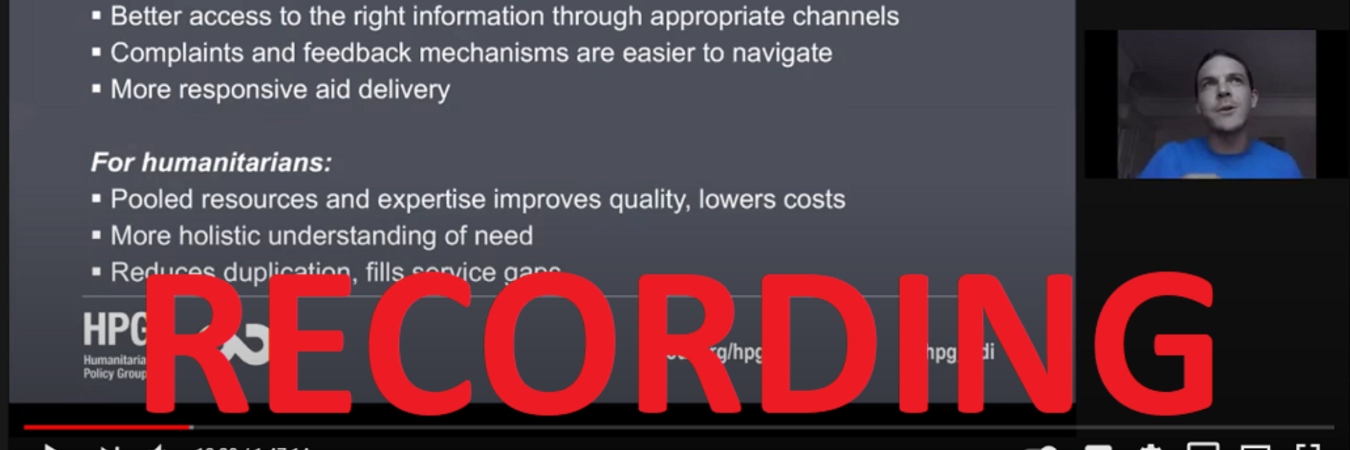
Recording available: webinar on collective accountability to affected populations
If you missed the webinar on 8 September with PHAP and IASC Results Group on Accountability and Inclusion on making collective accountability to affected populations (AAP) a reality, you can now access the video and audio recordings.
On 8 September, PHAP together with the IASC Results Group on Accountability & Inclusion organized the first webinar as part of an event series on strengthening accountability and inclusion. Building on the operational research on Communication and Community Engagement conducted by the Humanitarian Policy Group at the Overseas Development Institute (ODI), as well as its ongoing work around inclusion, the first webinar considered some of the lessons emerging from this research and explore how such approaches can be encouraged, particularly by leadership at country level.
The event started out with Oliver Lough, Research Fellow at ODI, who helped frame the event by providing an overview of the findings of the operational research on Communication and Community Engagement conducted by the Humanitarian Policy Group at ODI. The discussions with the panelists then began by Mia Seppo, UN Resident Coordinator in Bangladesh, who provided her views on the current state of collective AAP in the humanitarian sector, emphasizing the need for a contextualized understanding and effective coordination and communication mechanisms with key stakeholders. Nanette Antequisa, Executive Director, Ecosystems Work for Essential Benefits, Incorporated (ECOWEB) Philippines, offered her perspective of collective AAP in the Philippines, highlighting that collective accountability can only work if there is shared leadership between community and local organizations and international organizations.
Elham Youssefian, Inclusive Humanitarian Action and Disaster Risk Reduction (DRR) Advisor, International Disability Alliance highlighted the importance of inclusivity especially when it comes to the views, complaints and feedback from groups of people with disabilities. She further underlined the need to recognize, measure and understand the intersectionality and differences within these groups in collective AAP. Throughout the discussion, participants were taking part and providing their perspectives in the chat and through live polls.
If you missed this event, you are now able to access the video and audio podcast format recordings of the discussion on the event page, where you can also find the results of the live polls.
Access the recordings